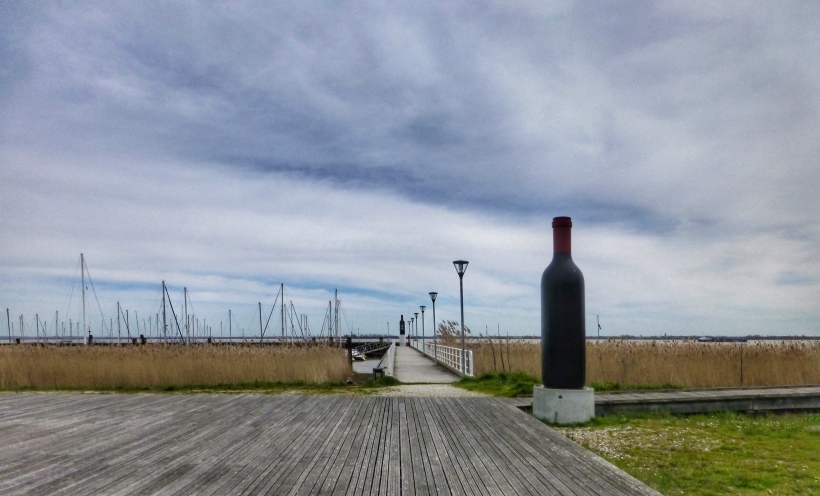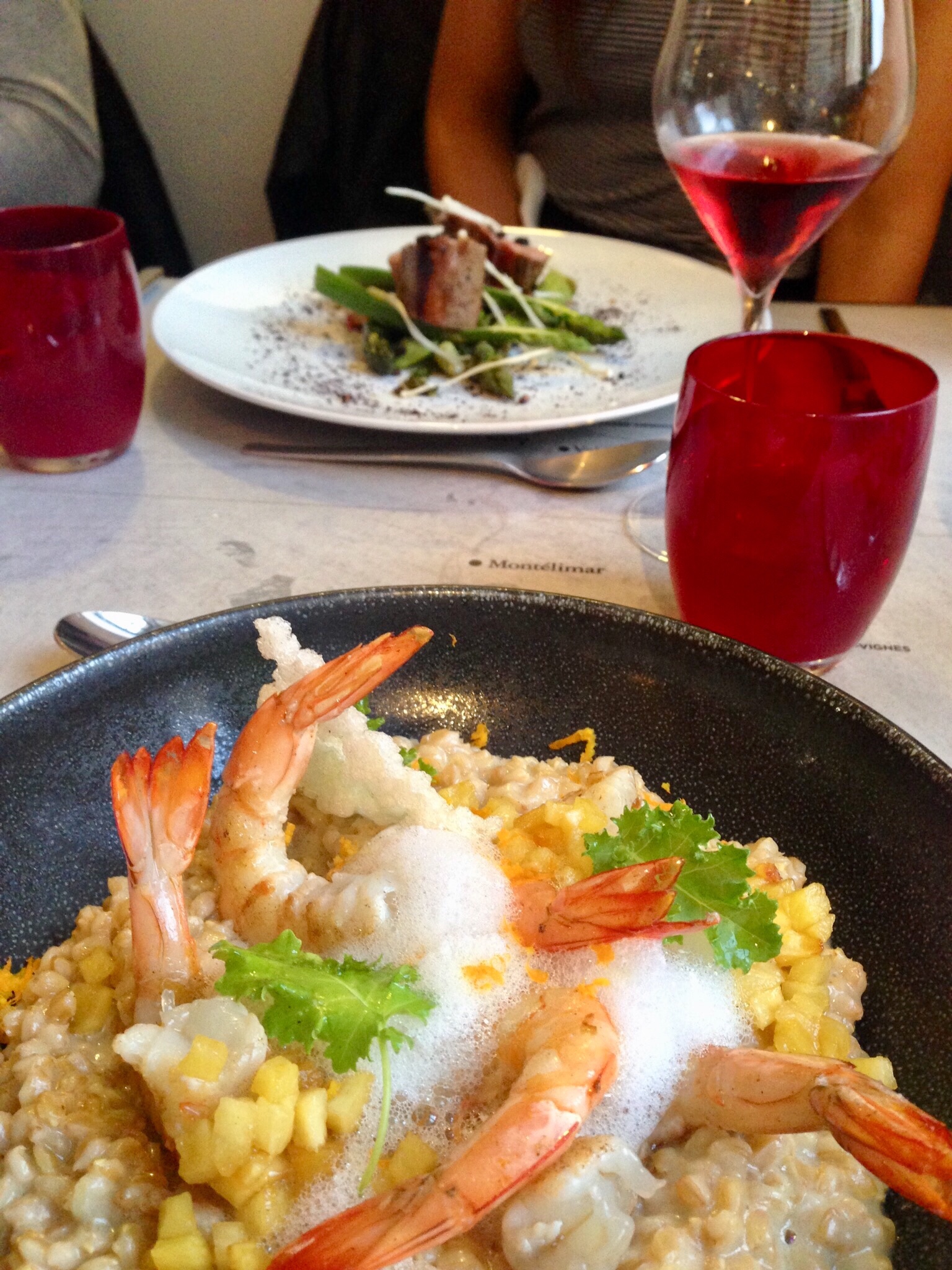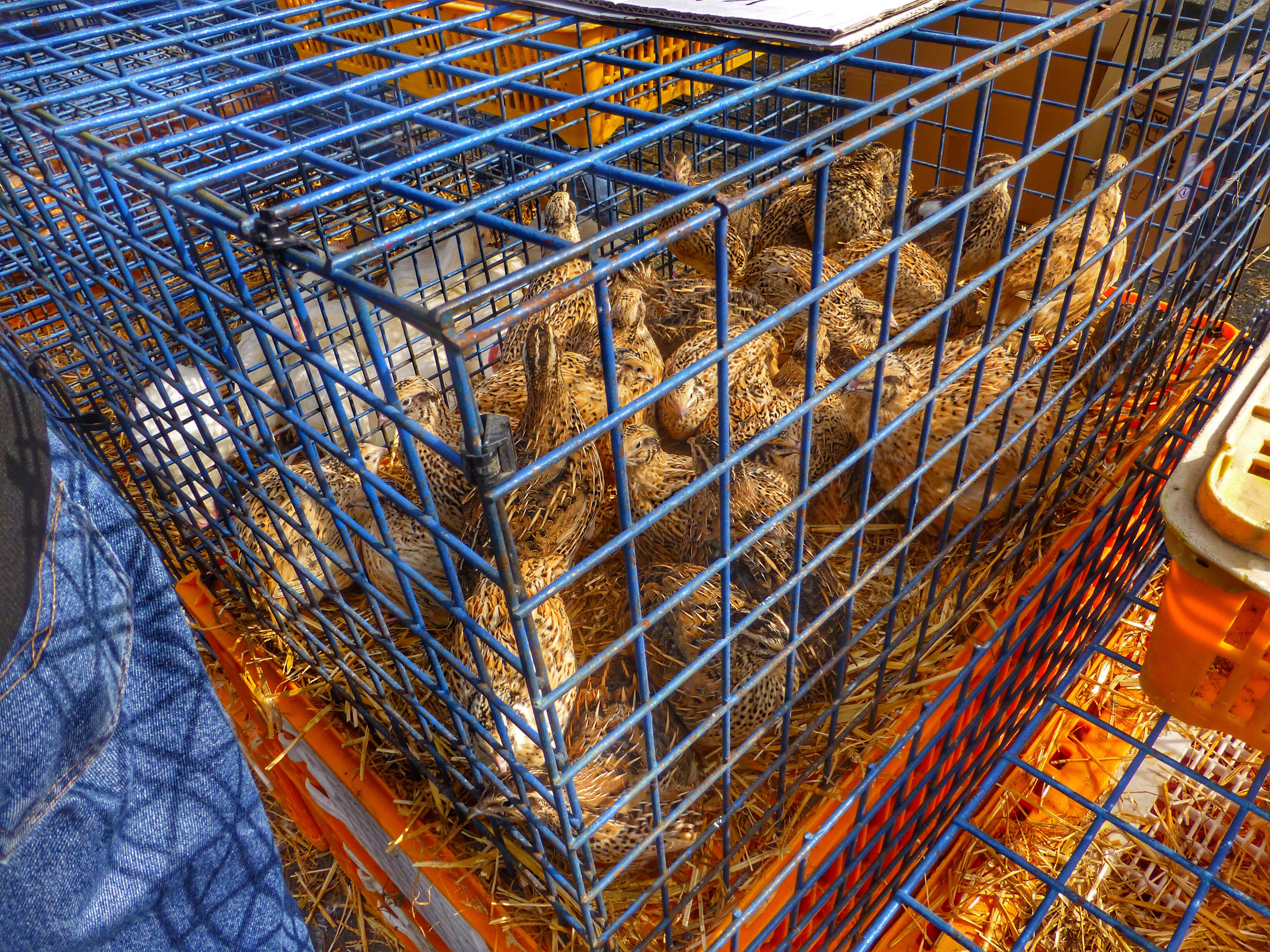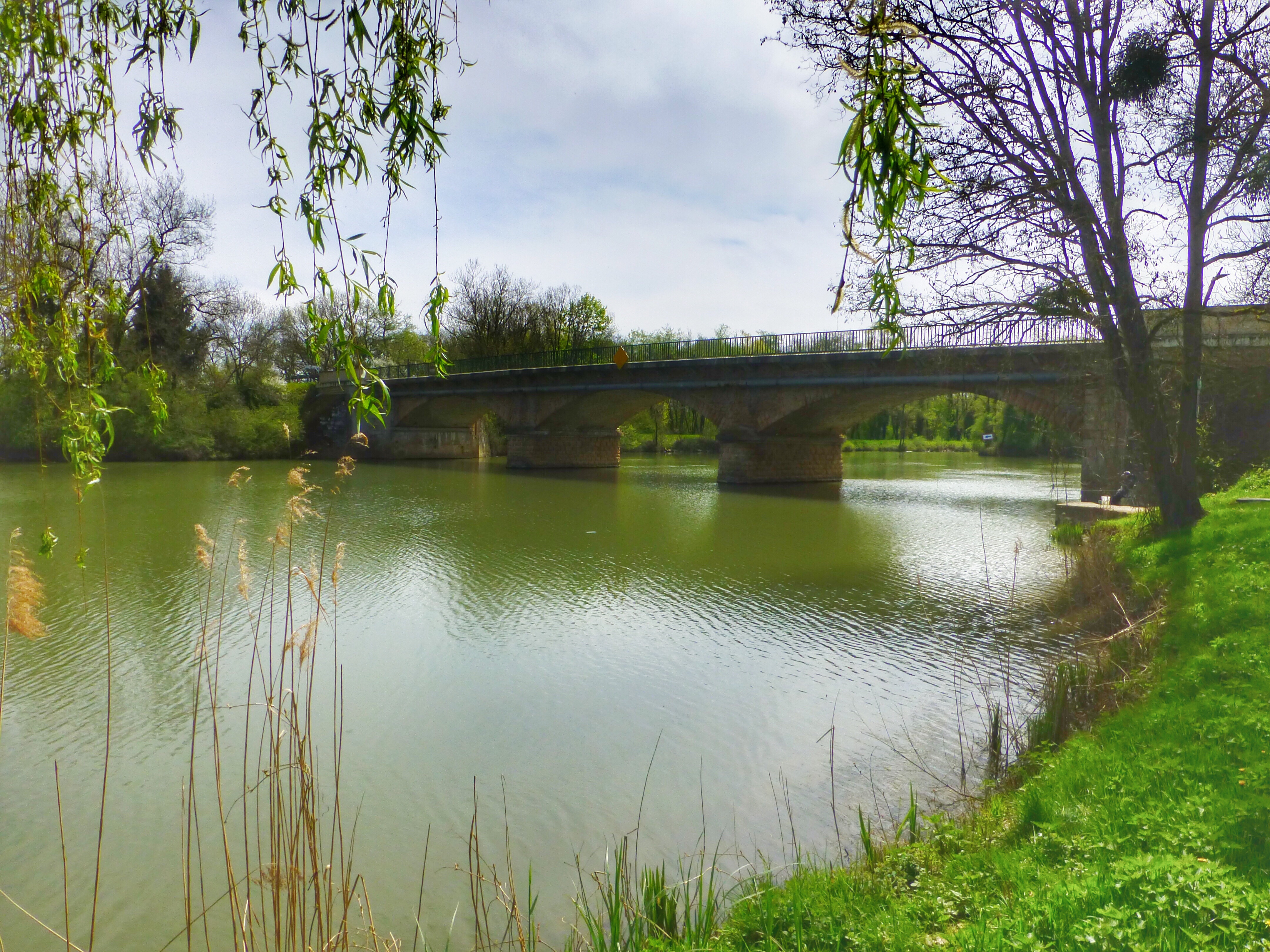With the incentive of cheaper mooring rates by the month we decided that, as we weren't in a hurry, we would get our car and base ourselves here for a month. Avignon itself has much to offer and, being in the heart of Provence, there are so many little villages surrounding it that are worth seeing. With tips and advice from the capitainerie and the tourist bureau we made a list of places to visit. Ryan and Kim were also flying in to stay with us for a long weekend so we wanted to choose some interesting places to take them.
 |
| Russet red village of Roussillon |
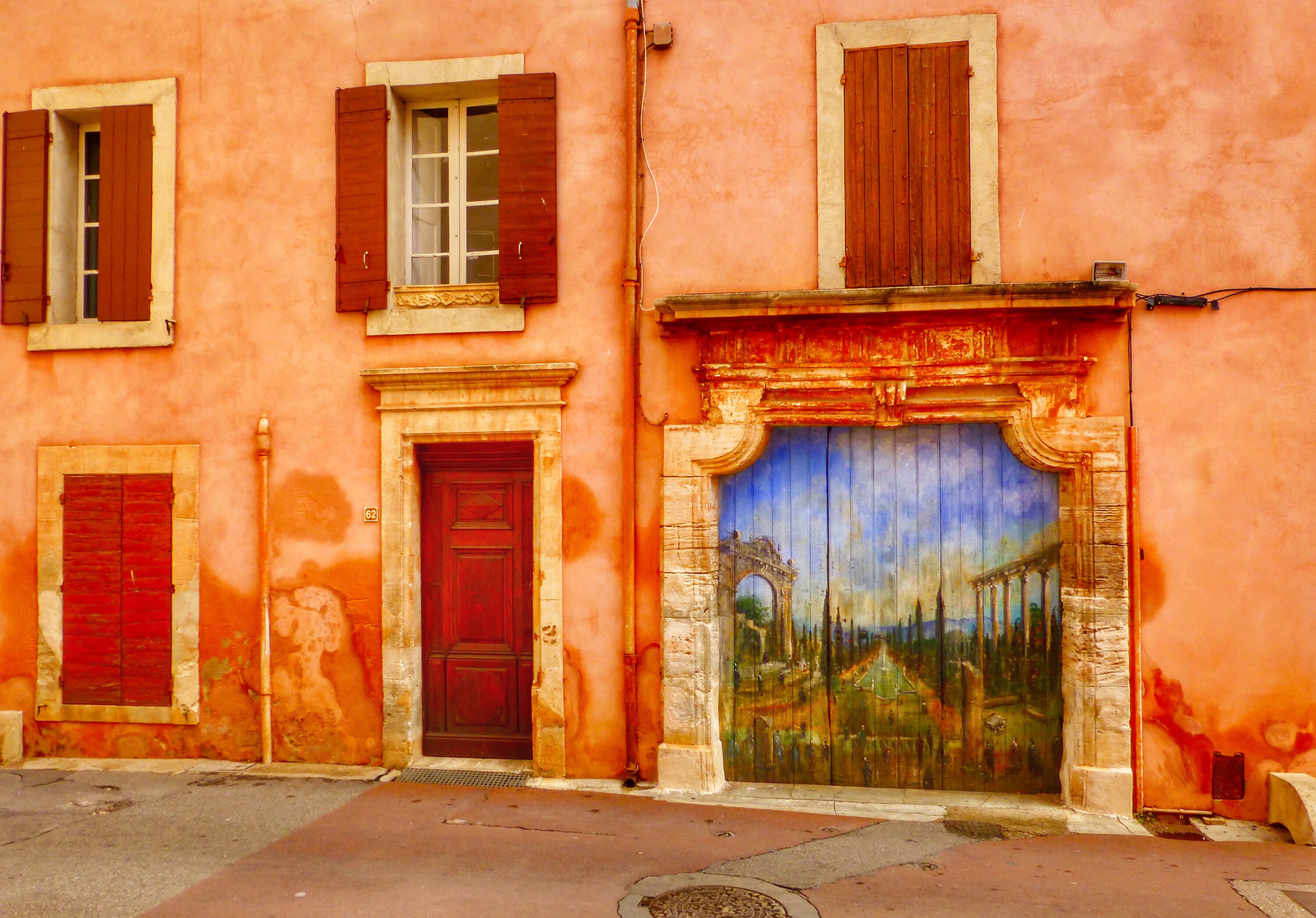 |
| colourful walls within the village |
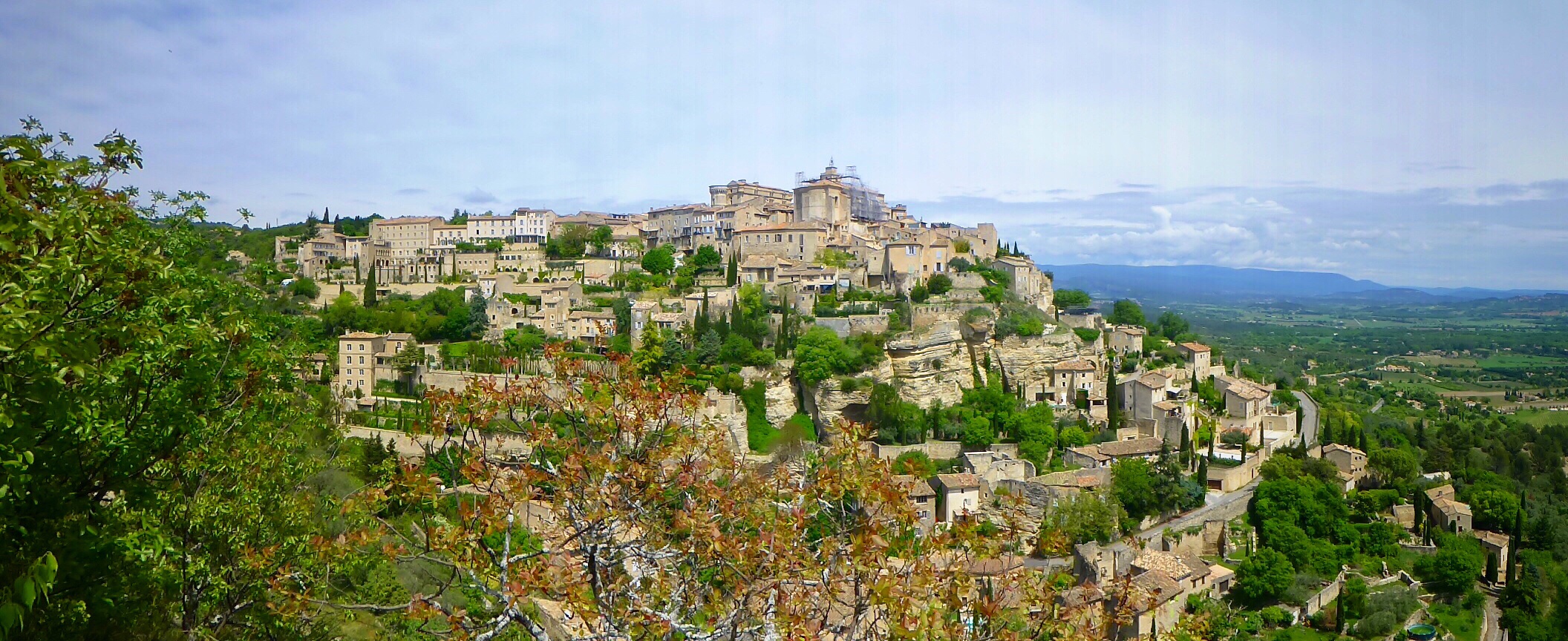 |
| Panorama of Gordes |
Our first little village was Roussillon. This village is named for its red ochre houses and it has the largest deposits of ochre in Europe. It is a very picturesque place much loved by many artists but not quite as touristy as it's neighbour of Gordes. We thought Roussillon was much nicer than Gordes, which is probably best viewed from the road leading into it. Gordes was pretty much a dying town until the mids 1960s when someone decided to rejuvenate it and make it a tourist destination. It seems to have worked well with a number of first class boutique hotels and restaurants.
Les Baux de Provence was another town on our list, also very touristy, with its popular hill top medieval chateau and a collection of medieval war machines such as trebuchets and battering rams. During the height of the summer, medieval festivals, jousting and demonstrations of medieval crafts take place. What we really came to see was the
Carrieres Des Lumieres. The old quarries beneath Les Baux have been converted to a sound and light show, showcasing works by various artists. This year Pablo Picasso was the featured artist. I would highly recommend this even if you don't walk up to the top of Les Baux to the chateau.
 |
| Some images from the show |
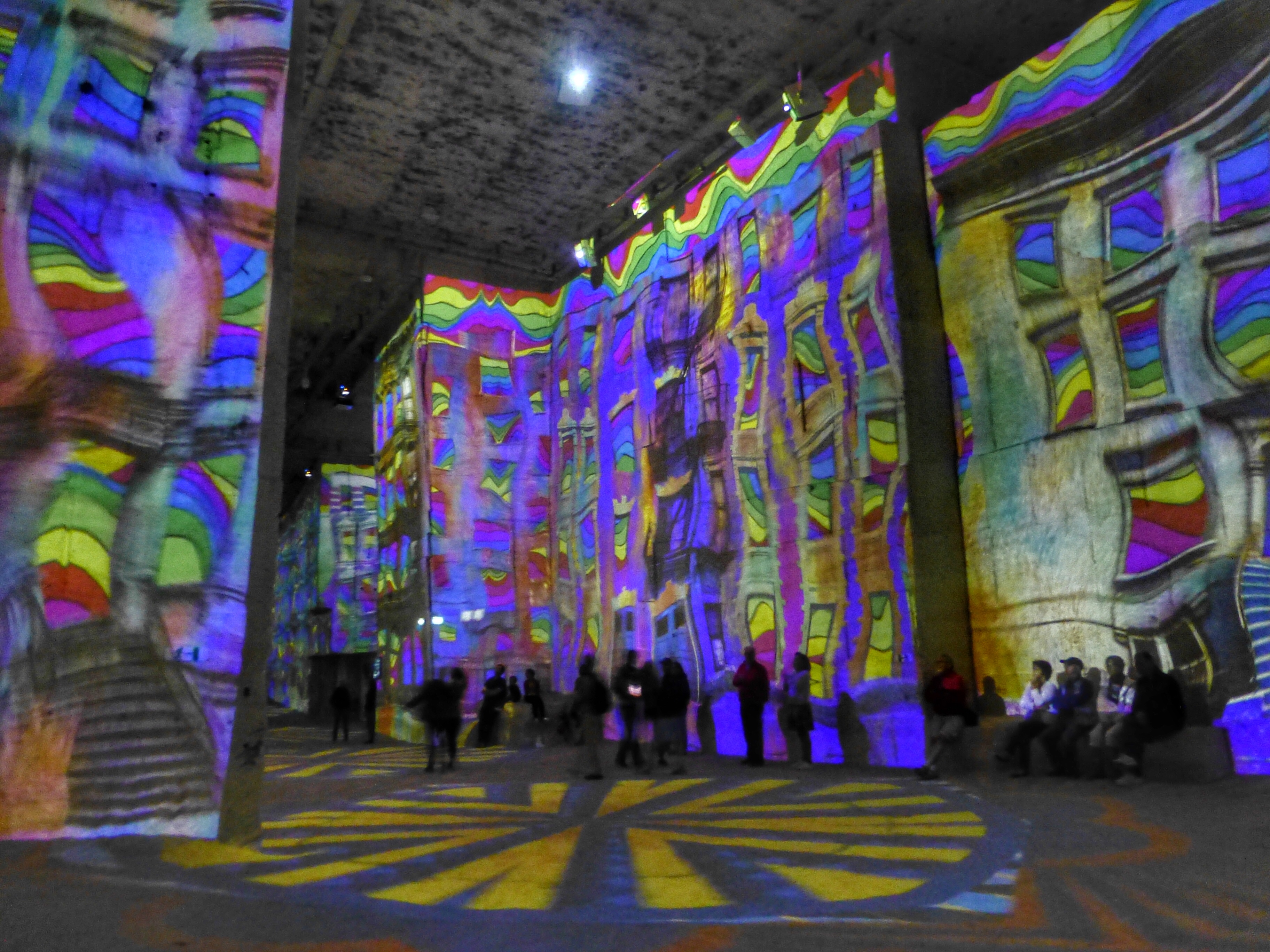 |
| interesting images |
 |
| Typical Picasso |
 |
| Colourful produce in shops on the path to the Chateau |
 |
| The Trebuchet |
 |
| The Catapult |
 |
| View of the Provencal countryside from the chateau |
Another highly recommended village is Uzes. Many people see this village in combination with the Pont du Gard but as we had visited this Roman site on a couple of other occasions, we decided to just head into Uzes. What a charming town. It is bigger than some of the other villages and has the more refined feel of a prosperous market town, with lovely shady treelined streets, interesting shops, lively market square and busy restaurants. We started with coffee and cake in a small but busy one woman run cafe then wandered around the old town and up into the newer part before heading into the market square in search of lunch. The market was in full flow and the restaurants were busy with good menu du jour options. Some people make a trip to Uzes because of their love of confectionary. The Haribo museum and factory is on the outskirts but we managed to control ourselves and drove straight past!
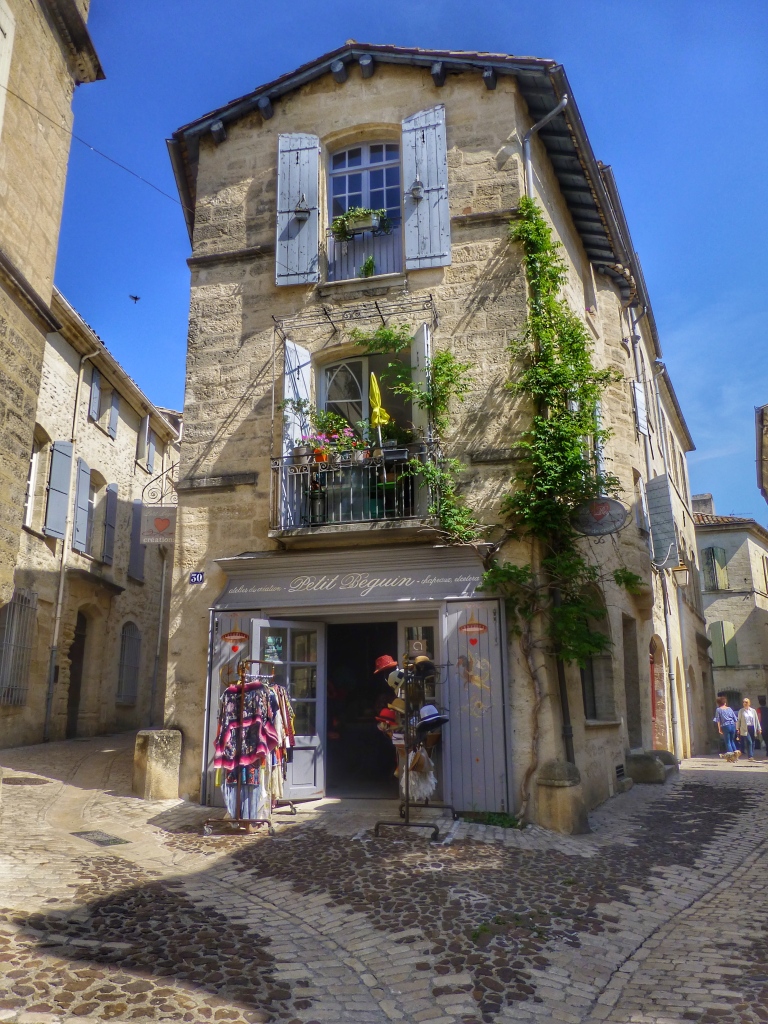 |
| Typical French decoration |
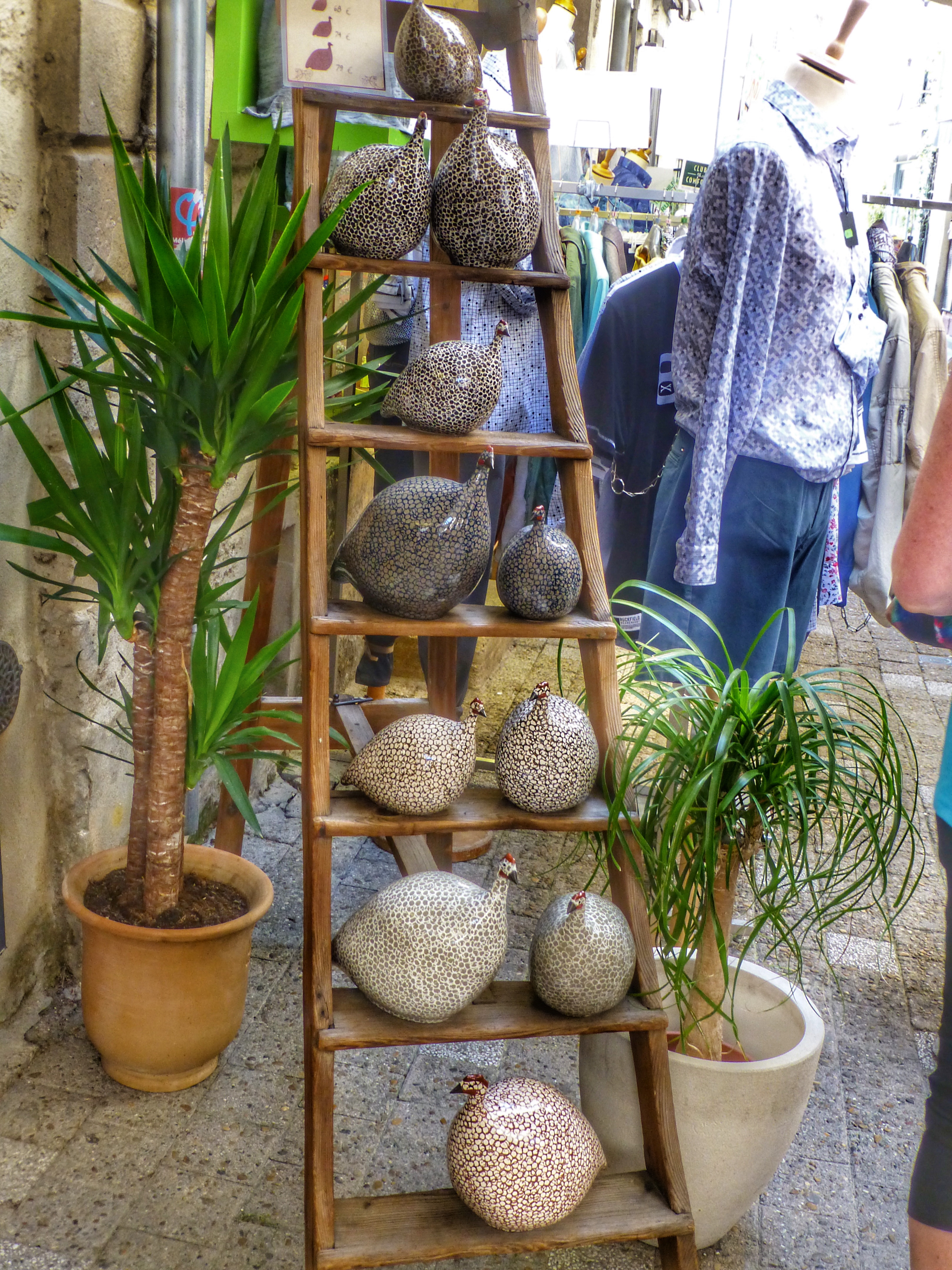 |
| Cute guinea fowls |
 |
| Lovely setting for lunch |
 |
| Lively market in the shady square |
 |
| Uzes Cathedral |
After lunch we drove to the colourful village of St Quentin La Poterie, so named because of the clay soil and hence all the potteries.
 |
| Some examples of the colourful tiles produced in the village |
 |
| Very colourful fountain but not for drinking |
 |
| Colourful house and there are even ceramic tiled drains |
From St Quentin we made our way back down to the Rhone river catchment area and the town of Tavel. This wine appellation area is renewed for its rose which can combine as many as nine different varieties of grape. The colour of the wine can range from a very pale pink to a deep russet colour depending on the combination of varieties. The tastings were generous and the staff very informative about the different appellations. They even had a wine which was grown of the same soil type as chateauneuf du Pape but without the name on the bottle and without the price tag.
 |
| Tavel is classed as the best rose in France |
 |
| Some of the whites are oaked for a few months |
 |
| Wine and art - a good combination |
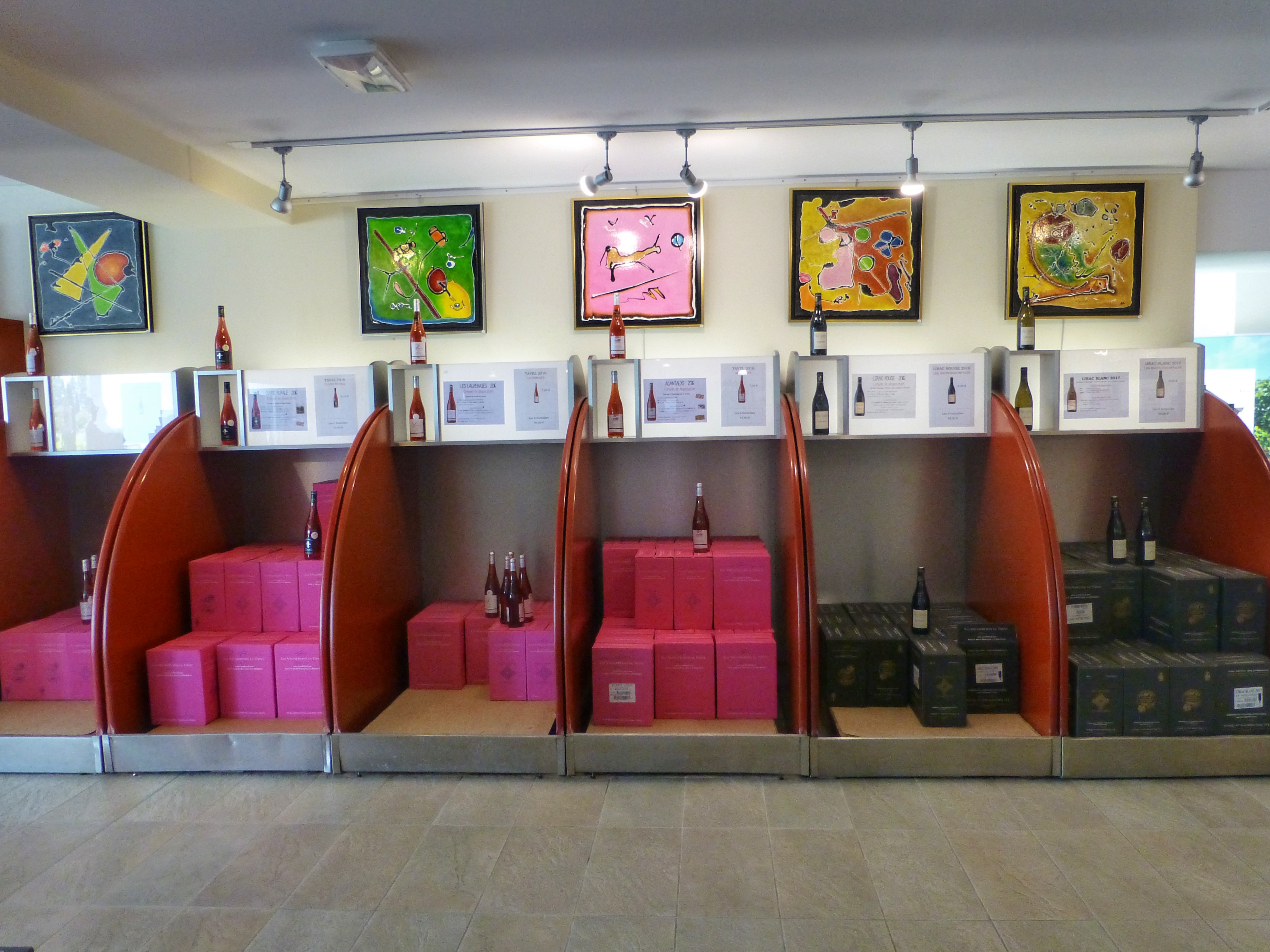 |
| Add caption |
 |
| Just in case you want to bring your own container - its cheaper than petrol |
Our last small village to visit on our stay in Avignon was Menerbes. This was a favourite spot with many impressionist artists but became more well known when author Peter Mayle wrote about his experiences in "A Year in Provence". Originally we were supposed to be going to the antique market in Isle our la Sorgue, but it was impossible to get a parking space so we went to plan B. We had a lovely lunch in Menerbes with fellow bargees, Mike and Gloria, and then had a wander around the town, only to be caught in a sudden thunderstorm. After seeking refuge in a small gallery we then continued our walk only to find that the storm hadn't finished drenching us. This time we managed to find a truffle shop, restaurant and information centre.
 |
| Colourful signs in a market town on the way to Menerbes - I particularly liked the one about the lunatic dog |
 |
| Colourful Boulangerie |
 |
| Menerbes town walls |
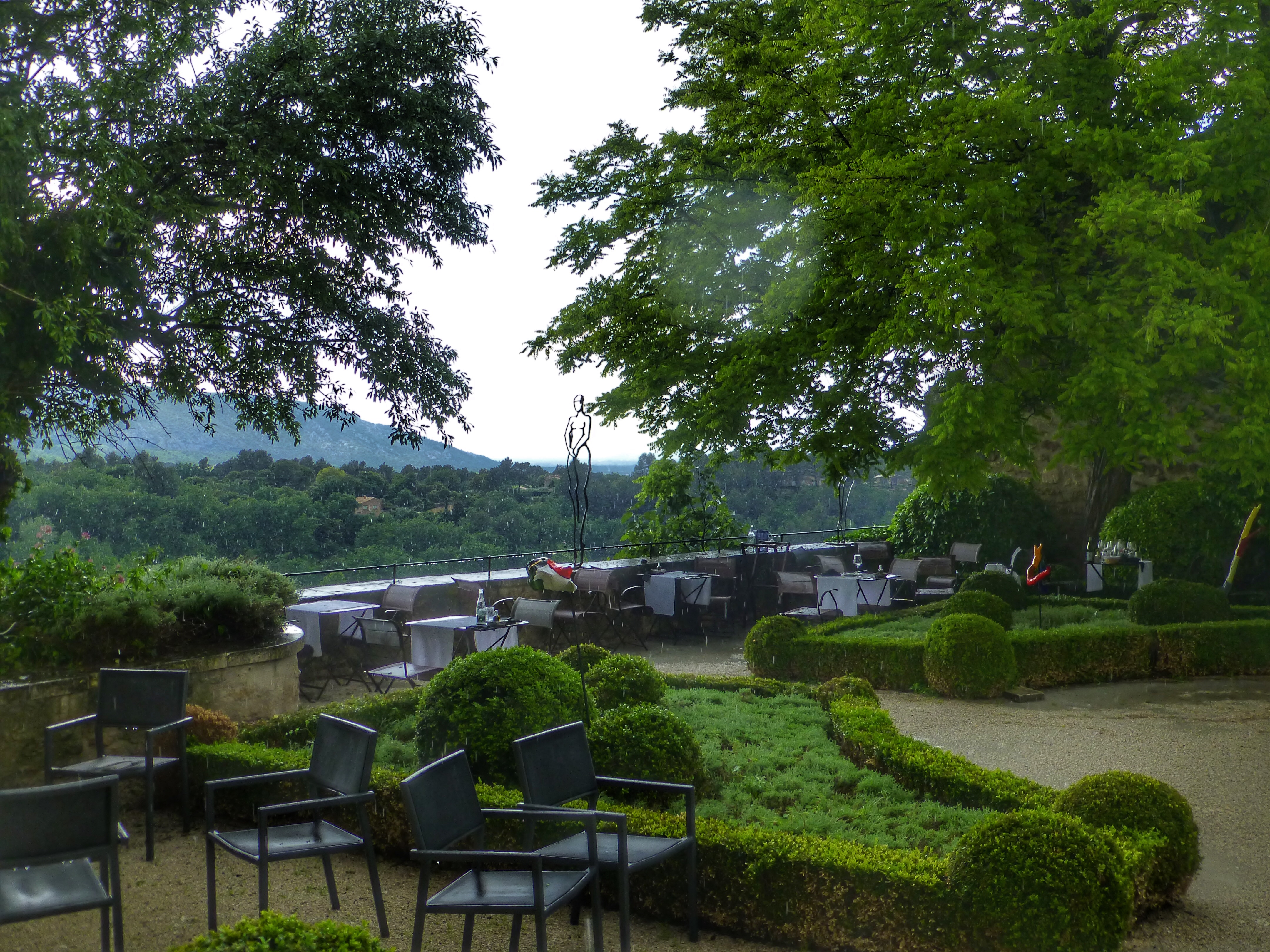 |
| enticing patio with views over the valley - pity about the drenching rain |




